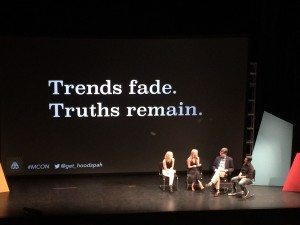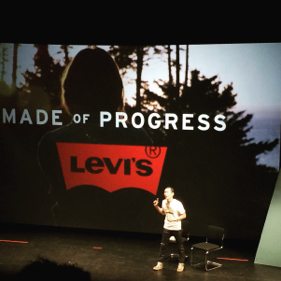This post was written by Jade Floyd and Anna Windsor on behalf of the Case Foundation:
Networking with people we admire, making new connections, and learning from organizations that inspire us: those are just a few reasons we love attending conferences and convenings in the social sector and beyond that help us advance our efforts to revolutionize philanthropy, unleash entrepreneurship and ignite civic engagement. While we wish we could find a way to easily clone ourselves and make it to all of the incredible gatherings there are to choose from, here are the few we’ll be attending (and in some cases hosting panels, dinners and other discussions) in 2015:
Opportunity Nation Summit, February 25 – 26, Washington, D.C.
The National Opportunity Summit unites a bipartisan, cross-sector group of business leaders, nonprofits, elected officials and young people working together to address the crisis of youth unemployment and its impact on opportunity in America. Join the Case Foundation for a panel on the “Power of Entrepreneurship on Youth Unemployment.” More details HERE.
Nonprofit Technology Conference (NTEN), March 4 – 6, Austin, TX
The Nonprofit Technology Conference highlights the latest technologies and best strategies to address pressing issues in the nonprofit sectors. Be sure to check out our own Elyse Greenberg on March 6th as she joins a panel of social media professionals for a lively conversation around engagement. They will explore how better engagement can lead to stronger programs, higher returns and greater impact for you and your initiatives. More details HERE.
SXSW Interactive, March 13 – 17, Austin, TX
The SXSW Interactive Festival is an incubator for cutting-edge technologies and digital creativity that tens of thousands flock to each year in Austin. Be sure to pop over to the many events hosted by the Case Foundation, including:
- Our CEO, Jean Case will lead a lively “Impact Investing Rumble,” where champions of impact investing will take on the nay sayers in a tag-team style debate to fight it out over whether or not one can really invest and receive financial returns. More details HERE.
- A Be Fearless Breakout Session where you can explore how you and your organization can integrate strategies and tactics to create greater impact and more meaningful social change. More details HERE.
- A session on How Potato Salad Killed/Saved Crowdfunding moderated by our own Allyson Burns with Gary Wohlfeill from Crowdrise; Ryan Grepper who created the Coolest Cooler which was one of the most popular campaigns on Kickstarter; and Zack Brown, the “potato salad guy” from from Kickstarter. Together they will explore the future of crowdfunding for nonprofits, for-profits and individuals and what this shift in crowdfunding means for the future of the sector. More details HERE.
- Join us in the convention center for a featured presentation on the future of entrepreneurship by our Chairman, Steve Case, including a fireside chat Catherine Rampell from the Washington Post. More details HERE.
- Later, Steve will join fellow judges Troy Carter and Sallie Krawcheck for the Rise of the Rest pitch competition. Join us as they showcase emerging startup ecosystems across the U.S. Five companies will have five minutes to pitch and the winning startup will receive a $100,000 investment. More details HERE.
- Pop over to the “Startup Oasis” produced by UP Global and the Kauffman Foundation from March 14-16th. Steve will join other entrepreneurs and startups at sessions and happy hours focused on women, fintech and education. Sign up HERE.
Skoll World Forum, April 15-17, Oxford, England
Every year in Oxford more than 1,000 thought leaders from the social, financial, private and public sectors convene to innovate, accelerate and scale solutions to the world’s greatest social issues. More details HERE. Council on Foundations Annual Meeting, April 26 – 28, San Francisco, CA The Council on Foundations’ Annual Meeting brings together global leaders from across philanthropy to develop the ideas and strategies that will shape the future. More details HERE.
Milken Institute Global Conference, April 26 – 29, Los Angeles, CA
The four-day conference in Los Angeles unites attendees as they devise solutions to today’s most pressing challenges. Stay tuned for more on events hosted by the Case Foundation to be announced in the coming weeks. More details HERE. Do Good Data, April 30 – May 1, Chicago, IL Do Good Data features innovative leaders who weigh in on how data is creating a more effective and efficient sector. More details HERE.
Forward Cities, date TBD
Forward Cities is a multi-city, national learning collaborative between New Orleans, Detroit, Cleveland and Durham. Over the next two years, leaders and local innovators from each of these cities are convening to connect with one another as they work to increase entrepreneurial activity and connectivity in disconnected communities. The Case Foundation is looking forward to supporting several of their upcoming meetings in Detroit and Cleveland this year so stay tuned for more!
EPIP National Conference, May 12 – 14, New Orleans, LA
The Emerging Practitioners in Philanthropy National Conference aims to develop leaders who are better equipped to advance social change. The theme for this year’s conference is “Emerging Voices, Empowering Communities” and will unite attendees as they address social disparities and discuss best practices to advance social change. More details HERE.
The Millennial Impact – MCON 2015, June 24-25, Chicago, IL
Each year the Case Foundation hosts MCON, a two-day experience for corporate, nonprofit and public leaders who create and build movements for causes by engaging the Millennial generation. MCON will be an especially enriching experience for cause marketers, and cause enthusiasts and cause leaders seeking to change the culture of their organizations. More details HERE.
Mashable Social Good Summit, September 27 th- 28th, New York, NY
The Mashable Social Good Summit is a conference examining the impact of technology and new media on social good initiates around the world. The summit is held during UN Week in New York City and unites a community of global leaders and grassroots activists. This year’s theme will be #2030NOW, asking the question, “What type of world do I want to live in by the year 2030?” More details HERE.
SOCAP, October 6 – 9, San Francisco, CA
SOCAP 15 (Social Capital Markets) will unite innovators in business, tech, the sharing economy, health and philanthropy to advance environmental and social causes through impact investing and social enterprise. More details HERE.
Independent Sector, October 27 – 29, Miami, FL
The Independent Sector Conference uses innovative formats to share the expertise of staff and board members from nonprofits, foundations and corporate philanthropy programs. The conference also features special programs including like NGen: Moving Nonprofit Leaders from Next to Now, as well as the Public Policy Action Institute. More details HERE.
2015 BoardSource Leadership Forum, November 9 – 10, New Orleans, LA
The BoardSource Leadership Forum is one of the largest annual gatherings of nonprofit board leaders. At this convening, attendees will discuss the latest trends and best practices in nonprofit governance to help guide their organizations toward greater impact. More details HERE.
We hope to see you at one or more of these gatherings, and look forward to sharing more about our learnings. We’ll check in later this year with an update on new gatherings that we’ve added to our calendar.
Have a conference not listed here that should be on our radar? Tweet us @CaseFoundation to share with #CFBlog.


